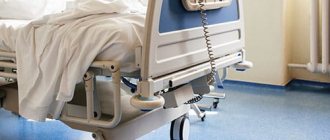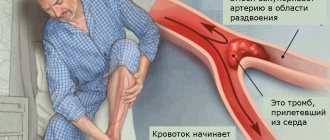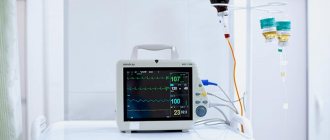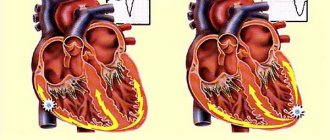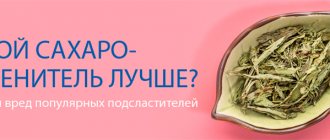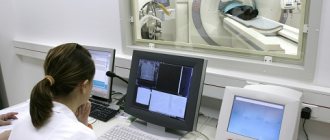The introduction of drugs into the heart cavity through the chest can be used only in exceptional cases, namely in a complex of resuscitation measures in case of cardiac arrest. Most often, adrenaline is used for this purpose.
But since this method does not have any great advantages over conventional injection into a vein, causes many complications, and also requires stopping cardiac massage to implement it, it is no longer widely used.
Effect of adrenaline on the heart
Adrenaline is one of the most powerful cardiac stimulants. Its effects are associated with interaction with beta1 receptors. Under the influence of this drug, the following changes in cardiac activity occur:
- heart rate increases;
- the force of contraction and the volume of blood ejected from the ventricles increases;
- oxygen uptake by the myocardium increases;
- the excitability of the heart muscle and signal transmission increases;
- the duration of systole decreases, and the time of diastole remains unchanged;
- the pacemaker may change;
- when exposed to high doses, as well as when combined with anesthetics, ventricular extrasystoles may appear;
- reduces the manifestations of blockade of pathways.
ECG before and after injection of adrenaline into the heart.
When administered intravenously or intracardiacly, myocardial cell death may occur, and the risk of ventricular fibrillation increases. Therefore, the use of Adrenaline should only be under control of the heart rhythm. In the presence of hypoxia, rhythm disturbances are observed more often. In this regard, the drug cannot be administered without prior respiratory resuscitation.
We recommend reading the article about vitamins for the heart. From it you will learn about vitamins necessary for the heart and blood vessels, effective medications prescribed by doctors.
And here is more information about what to take for heart pain.
Symptoms of anaphylaxis
When an allergen enters the human body, the reaction may be immediate or may occur within a few minutes.
The severity of the reaction depends on the time it occurs after contact with the allergen. The sooner the onset, the more severe the reaction itself will be.
First symptoms:
- the appearance of fear of death;
- heat, itching;
- swelling;
- weakness, lethargy, malaise, loss of consciousness;
- asphyxia, suffocation;
- low pressure.
Anaphylaxis can develop in different ways:
- breathing is impaired - narrowing of the lumen of the small bronchi, narrowing of the larynx, Quincke's edema;
- disruption of the gastrointestinal tract;
- convulsions, severe nausea, urinary incontinence;
- pain in the heart area, rapid heartbeat, sharp decrease in blood pressure.
The number of allergens received by the body does not matter. A severe reaction can be caused even by small doses.
When is an intracardiac injection given?
Intracardial administration of medications can be done to increase the effectiveness of resuscitation measures in case of clinical death. This method is usually used if, after 3 - 5 minutes from cardiac arrest, external massage does not lead to the start of cardiac activity. Contraindications for intracardiac injections include trauma or injury to the heart.
Heart massage should not be interrupted for more than 10 - 15 seconds. Therefore, to carry out an injection you need to be proficient in this method. Anesthesia for puncture while contractions are stopped is not used.
What injections are given into the heart?
Most often, Adrenaline solution is used in complete asystole to restore myocardial contractility and increase pressure. The maximum single dose is 1 ml, and the daily dose is no more than 5 ml. In addition, the doctor can perform the following injections:
- Atropine solution 0.1% 0.5 ml to reduce the tone of the parasympathetic system, improve conductivity and increase heart rate.
- Calcium chloride 5 ml 10% to increase myocardial excitability and accelerate impulse conduction, prolonging the time of systolic contraction.
Instead of Adrenaline, it is possible to administer Noradrenaline, as well as a mixture: 1 ml of Adrenaline and Atropine, 10 ml of Calcium chloride and isotonic solution. First use half the mixture, and after 10 minutes the injection can be repeated.
For ventricular fibrillation, an injection of Adrenaline in combination with Novocaine is indicated.
If there has been an overdose of cardiac glycosides, and transesophageal electrical stimulation has not produced results, then for medicinal defibrillation, an intracardiac injection with 10 ml of Panangin can be performed.
First aid for anaphylaxis
In such a difficult situation, only immediate qualified medical assistance can help. This can save a person's life.
Algorithm of actions
- Stop the intake of the substance that caused anaphylactic shock (contact, injection of the substance, food, inhalation of vapors, and other options). In case of an insect bite, you must immediately remove the sting and apply ice to the affected area. If anaphylaxis is caused by food, then you need to remove its remains from the oral cavity.
- Call an ambulance. In such a difficult situation, a call to an ambulance is mandatory, regardless of the symptoms of anaphylactic shock. The shock may be biphasic and may recur after 1-3 days.
- To alleviate the condition, the patient should lie on his back with his legs raised above his head.
- In case of nausea, you need to turn the patient's head to the side in order to prevent vomit from entering the respiratory organs.
- Open the windows to allow fresh air to flow, unbutton the patient’s clothes to make breathing easier.
- Cleanses the mouth to make breathing easier.
- If you have dentures, you need to remove them. If there is mucus in your mouth after vomiting, you need to clean your mouth with water.
- Check breathing and pulse. If there is no pulse, artificial heart massage is necessary. If the patient stops breathing, the process of artificial respiration will be ineffective due to swelling of the larynx. An intramuscular injection of a 0.1% adrenaline solution can help a patient and save his life.
If a person has had cases of anaphylactic shock before, he should always have with him a syringe pen containing a single dose of adrenaline.
In medical, there is an allergist-immunologist who will help you find out the causes of your allergic reactions and help prevent anaphylactic shock. He will give all the necessary recommendations and treatment plan. We can provide all allergen tests. The doctor conducts consultations at home and in the clinic (in Zapadny and in Alexandrovka). The cost of the medical center’s services can be found in the “Price” section or by calling the 24-hour hotline.
Watch a useful video
How to make a direct injection
The drugs can be administered into the right ventricle. In this case, choose the following places:
- the fourth intercostal space for young and fifth – for elderly patients;
- the distance from the edge of the sternum is 0.5 cm for a narrow chest and 1 cm for a wide chest.
The needle should be long (10 - 12 cm) and thin, it moves perpendicular to the sternum along the upper edge of the rib. After 3 - 5 cm there is a feeling of failure, and blood enters the syringe. This means that the injection was performed correctly.
The left ventricle is punctured in the 4th or 5th intercostal space between the line in the middle of the clavicle and the axilla.
Efficiency. Professionalism. Mercy
The elderly woman became ill. Low blood pressure, rare breathing. During the examination, clinical death occurred. Resuscitation was complicated by the fact that it was simply impossible to administer the drug intravenously. Stories like these are part of everyday work for an emergency doctor. And in every situation, he does everything to make a person’s heart beat again.
My heart started beating again
In the case of this patient, Andrei took out a tool similar to a drill from his suitcase. Using a special thin drill, he made a hole in the bone on his leg, inserted a catheter and injected adrenaline.
“At the same time, the patient had to insert a special tube into her trachea and perform a heart massage. After about 40 minutes, her heart started beating again. After the threat of death had passed, the elderly man was taken to the hospital in serious condition,” says Andrey.
By the way, doctors don’t give injections directly into the heart, as they show in films. According to the doctor, it has been proven that such resuscitation may cause more harm than good.
For Andrey Gorlanov, saving lives and health is his daily and favorite job. He likes being “on the front line”; for this reason, he got a job in an ambulance more than a year ago. Before this, the young man worked for three years in intensive care in one of the Tyumen hospitals.
Nowadays doctors don’t give an injection directly into the heart, as they show in films. Photo: From personal archive/Andrey Gorlanov
“It’s more calm in the intensive care unit, but I wanted to work in the fields so that the new working day would be different from the previous one,” explains the doctor.
He never left the intensive care unit forever. Andrey manages to combine both jobs. Each of them is difficult in its own way, but they have one thing in common - in both cases he saves lives. The most difficult ambulance calls, according to the doctor, are road accidents, falls from heights, and burns. In these situations, every second counts, and it is important not only to provide assistance correctly, but also to quickly deliver to the hospital.
As a rule, doctors do not believe in miracles, but sometimes situations arise when you simply cannot find another explanation. In Andrey’s practice there were also such cases.
“A forty-year-old woman got up at night and suddenly fell unconscious. Clinical death occurred, we arrived in 12 minutes. They diagnosed a fatal arrhythmia, which means that the heart stopped working as it should and did not supply blood to either the heart or the lungs, the doctor recalls. “We took out a defibrillator and gave about 8-10 shocks. There was no effect. Perhaps because she was without help for a long time, because even 12 minutes in such a situation mean a lot. With each unsuccessful shock, we began to lose faith that she could be brought back to life. According to all the rules, if after 30 minutes the heart does not start beating, resuscitation stops. But a miracle happened. Literally in the last minutes of resuscitation, my heart started beating. There was only a little time left before the line was passed.”
Andrey had to lose patients. He admits that in such situations the thoughts “if only five more minutes, and suddenly we could save him” occurred to him. The doctor calms himself down only by carefully analyzing the situation: has everything in his power been done?
“Thirty minutes of resuscitation were invented for a reason. The fact is that even if, after, for example, 45 minutes, it is possible to start a heart, the person will remain disabled for life. Brain cells begin to die, it is impossible to restore them, and subsequently such people will not be able to walk, eat, or talk independently, says Andrey. “It’s hard to lose a patient emotionally. But when you realize that you did everything you could, peace comes. No matter how much you would like, no one is eternal.”
Over many years of work in medicine, the doctor learned to turn off emotions. But before going to bed, no, no, he will remember incidents from his shift. In medicine, you cannot go beyond the threshold and leave all your thoughts within the walls of the medical institution.
Patient - partner
As a rule, in every emergency situation, relatives always stand behind the doctor. A lot depends on their behavior. It is invaluable if they know how to properly provide first aid. According to doctors, everyone should be able to help in an emergency, because an emergency can happen anywhere. And if the brigade gets there in the city in 10-15 minutes, then it will take half an hour to get to the countryside or to the dacha. And while the doctors are traveling, irreversible changes may begin in the victim’s body.
“It’s good when people control themselves and can help: hold a bottle of medication, hand over an instrument, go to the ambulance to get equipment, because even if there are five doctors in the team, there are always not enough hands,” explains Andrey. “But sometimes relatives begin to become hysterical, start crying, someone screams, and someone even starts giving advice: what medicine is better to give, whether or not to do an ECG.”
Doctors try to tell and explain everything to patients and their families. According to Dr. Gorlanov, the times when only the doctor decided everything are a thing of the past. Now the patient is a partner who helps provide quality care.
In general, each patient needs a special approach. Andrey was convinced of this from his own experience. Some people have to be convinced to go to the hospital, while others, on the contrary, have to be dissuaded.
The patient helps provide quality care. Photo: From personal archive/Andrey Gorlanov
“Sometimes patients insist on hospitalization. We explain that we can take them away, but they still won’t be admitted to the hospital, and returning home at two in the morning from the hospital is not the best adventure for a person,” says Andrey. “But those who have to be persuaded to go to the hospital are men.” For some reason, many of them think that they are immortal. You explain that according to the cardiogram he has a heart attack. Sooner or later he will still end up in the hospital, but it is unknown in what condition - not in any way. Sometimes you have to involve relatives to influence the patient.”
Doctors have no right to force a person to go to the hospital, even if he dies five minutes after they leave. The only case when a patient can be forcibly taken to a hospital is if he is mentally unwell, but here the decision is made jointly with the psychiatric team.
CPR robot
According to Andrei Gorlanov, ambulance services are getting better every year. There are increasing opportunities to stabilize patients' conditions before they are admitted to the hospital. For example, now when calling to remote villages for a heart attack, emergency doctors administer a drug to the patient that dissolves the blood clot. This helps improve your condition on the way to the hospital.
“Robots” also help doctors in intensive care. Thus, special equipment can perform closed cardiac massage without human intervention, which means freeing up doctors’ hands.
Special equipment can perform closed cardiac massage without human intervention. Photo: From personal archive/Andrey Gorlanov
“The device does chest compressions and forces the heart to contract, which ensures blood circulation throughout the body,” explains Andrey.
If the patient is in serious condition, the team calls their colleagues at the hospital along the way, then resuscitators are already waiting for them at the entrance to the hospital. The emergency doctors do not know how the treatment will continue and what will ultimately happen to the patient. Having handed over one patient to the hands of doctors from the hospital, they go to the next call.
There can be 10 or 18 calls per day. Most often, medical teams are called for strokes, accidents, heart attacks, serious injuries, and unconsciousness.
“Sometimes when calling an ambulance, relatives deliberately exaggerate the patient’s condition so that the team will arrive sooner. The man’s head is spinning, and they say on the phone that he is unconscious,” says Andrei Gorlanov. “At the same time, they don’t think that during this time, those who really need it most were left without help.”
Author: Siren Babaeva
Why is the method no longer used?
If earlier Adrenaline for injection into the heart cavity was recommended as the most effective method, then with deeper study it began to be widely abandoned. This is due to the lack of efficiency and great danger of such technology. Possible complications:
- Penetration of medications into cavities - pleural, cardiac sac, mediastinum or myocardium. Calcium chloride can cause tissue death.
- If the needle gets into the sinus node, then it is impossible to restore contractions due to the destruction of the pacemaker cells.
- If the needle is not inserted sufficiently into the contracting heart, the myocardium is injured.
- With repeated injections through the holes, bleeding may begin during intense cardiac massage.
- Puncture of the lung causing pneumothorax.
- Damage to blood vessels between the ribs, thoracic or pulmonary arteries, aorta, coronary branches.
The administration of Adrenaline can also activate the function of the parasympathetic part of the nervous system, which has an inhibitory effect on cardiac activity, and its negative effect is rhythm disturbance.

